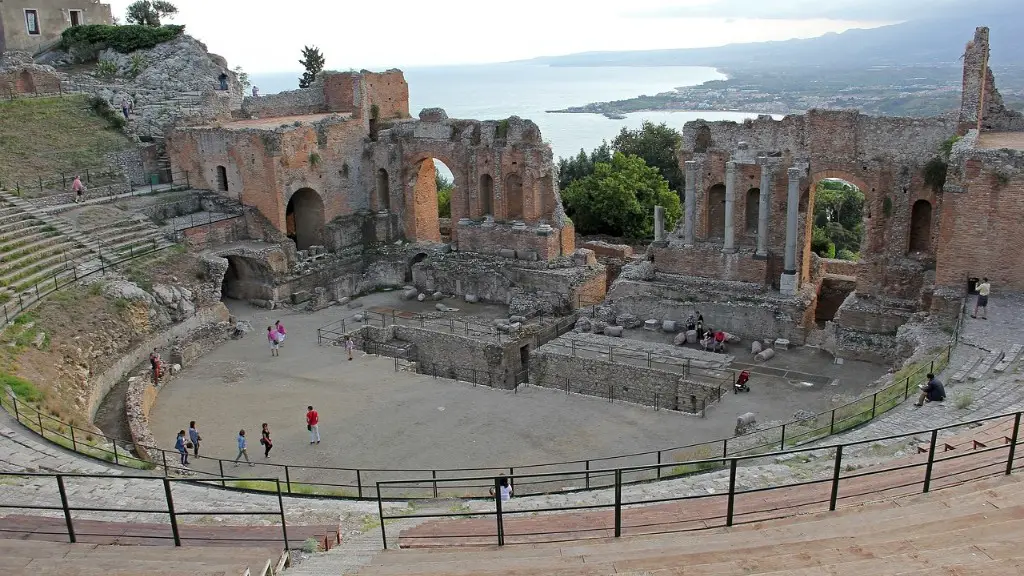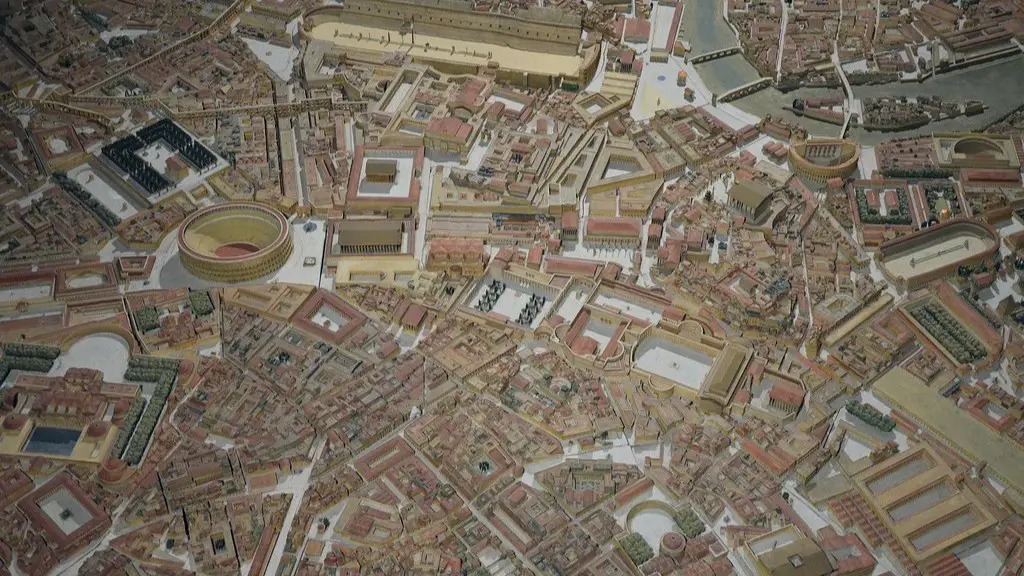Exploring the Reasons Behind Ancient Rome’s Decline
The Roman Empire was a vast and powerful domain that covered much of Europe, North Africa and the Middle East. After centuries of successful expansion and conquest, it eventually fell into a period of decline and ultimately collapsed in the fifth century AD. This period of decline has been the subject of much scholarly debate, with many historians and academics exploring the possible causes for why the Roman Empire declined.
The first explanation offered by many scholars is the growth of corruption within Rome. Roman society during the late empire was marked by rampant nepotism, bribery, and inefficiency. This systemic corruption was believed to have weakened the empire’s power and caused economic stagnation. Throughout the late empire, for example, land seized by the wealthy and powerful was not returned to the user or redistributed, preventing economic and social mobility.
A second explanation is the increasing size of the Roman Empire. As the empire continued to expand, its borders became increasingly difficult to defend. Its immense land requirements put a strain on the economy and made it impossible for the Roman Empire to keep up with the military developments of its enemies. This led to a series of costly military campaigns that drained the empire’s resources and left it vulnerable to attack.
A third explanation is the rise of migratory invaders. The migration of Germanic tribes in the fourth century AD weakened the authority of Rome, especially in its western territories. As the tribes entered the Roman Empire, they brought with them new ideas, technologies, and cultures that challenged the authority of Rome. The Roman response was to attempt to assimilate these newcomers, which ultimately failed, resulting in a weakening of its power.
Other explanations include political instability and the emergence of Christianity, which many saw as a threat to the traditional Roman state. The political instability caused by a chaotic succession of emperors who never fully consolidated their power, as well as the highly disruptive schism between East and West, weakened Rome and hampered its ability to respond to external threats.
The rise of Christianity, especially in the fourth and fifth centuries, has also been identified as a contributing factor to the decline of Rome. The establishment of a new religious system led to the weakening of the traditional state religion and to growing dissent from religious authorities. Furthermore, Christian beliefs ran counter to the traditional Roman way of life, especially regarding slavery and the structure of the family.
The Impact of Natural Causes on the Fall of Rome
An array of catastrophic natural events contributed to the fall of the Roman Empire. Some of the most damaging were the plague of Cyprian, which decimated Rome’s population; the eruption of Mount Vesuvius, which destroyed the major port of Pompeii; and a long period of bad weather that severely disrupted agricultural production in many parts of the empire. These natural disasters combined with Rome’s weaknesses in administration and security to weaken its authority and to further destabilize its economy.
Climate change has also been cited as a contributing factor to the collapse of the Roman Empire. During the period when the Roman Empire was flourishing, a period known as the ‘Roman Optimum’, Rome enjoyed unseasonably mild winters and warm temperatures. This period ended in the fourth century, however, and temperatures began to drop, leading to longer and harsher winters. The resulting crop failures, subsistence-level food shortages, and high mortality rates weakened the Roman state and contributed to its eventual collapse.
The Military Factors behind Rome’s Decline
The military situation in the late Roman Empire was also a factor in its decline. The Roman Army had long been a source of stability and power for the Roman state, but by the fourth century, it had been reduced to a shadow of its former glory. Rome’s military had become overly bureaucratic and ineffective, with a heavy reliance on inferior foreign troops who had little loyalty or connection to Rome. Furthermore, the cost of maintaining a large military was increasingly expensive, and its structure and tactics had become outdated in the face of more modern enemies.
In addition, Rome’s enemies had adopted new methods of warfare that the Roman army could not match. The Hunnic and Germanic tribes, for example, used small but mobile and disorganized forces that could defeat Rome’s disciplined but heavily armed legions. These new tactics and technologies helped to erode Rome’s military power and to weaken its ability to defend its borders.
Analyzing Economic and Social Causes of Rome’s Decline
Economic factors have also been identified as a contributing factor to the decline of the Roman Empire. The high cost of maintaining its vast territories, coupled with economic mismanagement and a lack of investment in infrastructure, had resulted in a declining economy. This, in turn, weakened Rome’s ability to maintain its military and its standing as a superpower. Furthermore, inequality had increased within the empire, with rising poverty, particularly in the provinces, eroding the social fabric of Rome.
Furthermore, a rise in taxation to pay for Rome’s military campaigns, along with its over-bearing bureaucracy and oppressive laws, weakened agriculture and manufacturing in the provinces, further destabilizing the economy. This led to inflation and rising prices that further hindered economic growth, eventually leading to financial problems.
Societal Factors in Rome’s Decline
Societal factors have also been put forward as possible explanations for Rome’s decline. As the Roman Empire expanded, a large emphasis was placed on maintaining control on conquered territories. This led to the incidence of heavy-handed government policies, such as taxation, imprisonment, and oppressive laws. These measures, especially in the provinces, contributed to rising unrest, rebellions, and general dissatisfaction among the people, weakening the empire’s support.
The weakening of cultural and social bonds within society has also been identified as a possibility influencing Rome’s decline. As Roman elites invested more in private enterprises and less in public services, a sense of social cohesion and community withered away. This lack of support for the state and its institutions, as well as for its political and religious doctrines, caused a sense of alienation and eventual dissent among the population.
Breaking Down the Complex Contributing Factors to Rome’s Decline
The reasons for the collapse of the Roman Empire are complex and diverse, and there is no single explanation that can fully account for its decline. A variety of factors, including internal and external threats, natural disasters, economic mismanagement, military weaknesses, and a breakdown in social cohesion and support likely contributed to Rome’s decline. Ultimately, however, it was a combination of these factors that weakened the Roman Empire and caused it to ultimately collapse.

